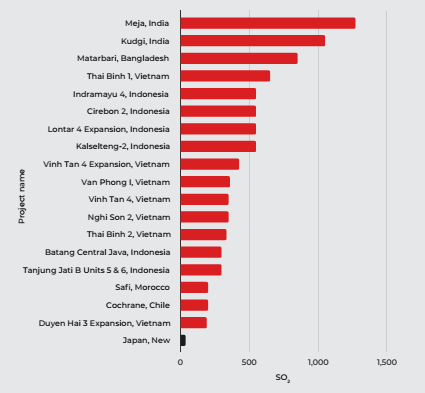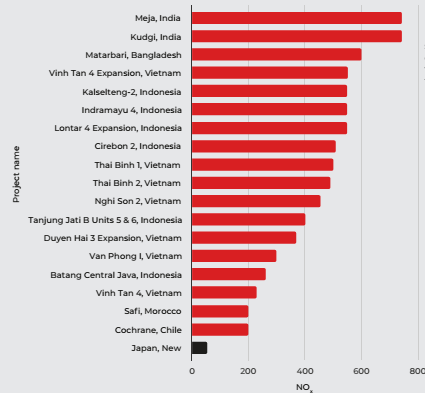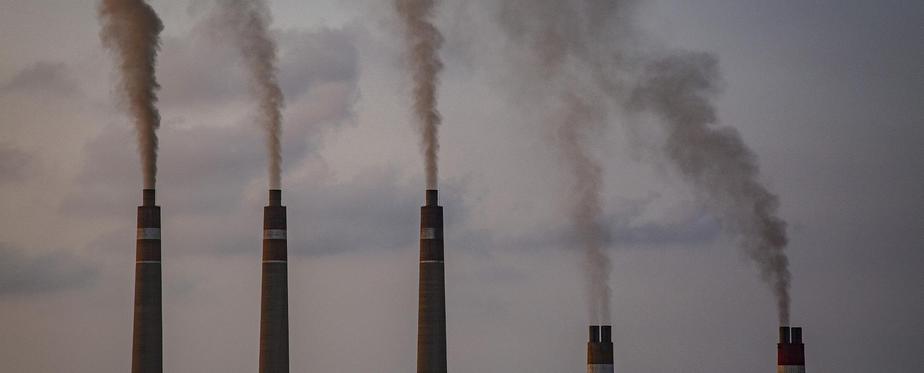Written by Vaishnavi Rathore
At first glance, Japan is a good example for countries that aim to go green. By 2030, the country plans to reduce its proportion of coal in its energy mix to 26% from the current 32%. In May 2019, the Japanese government even endorsed a joint meeting a group of mayors from G20 countries which concluded with aims of 100% renewable electricity by 2030 and 100% renewable energy by 2050, phasing out coal completely. With this positive shift backed by their strict Air Pollution Control Act, operators of coal power plants have withdrawn from coal projects in Japan.
Now, wait one second. Let’s read that sentence again: operators of coal power plants have withdrawn from their projects in Japan. In contrast, Japan’s public finance institutions still invest in overseas coal projects in countries like Indonesia, Bangladesh, and India. Worryingly, in such projects, Japan adheres not to its own domestic emission regulations, but that of the host country, which are usually far more inferior and lenient. The latest report by Greenpeace which highlights this matter, has termed it as Japan’s ‘deadly double standard’.
India is one of the top five countries that receive Japanese investment. The 2400 MW Kudgi Super Thermal Power Project in Karnataka commissioned in 2016 is one such project funded by the Japan Bank of International Cooperation (JBIC) — one of Japan’s public financial institutions. At Rs 5,242 crores, JBIC is the second largest international financial institution that lends to coal projects in India. For the Kudgi project, India’s state owned company, National Thermal Plant Corporation (NTPC), plays the role of the parent company.
What does Japan stand to gain?
While extending financial support to the host country — in this case, India — such arrangements also grease the wheels of the domestic country’s economy; they come with ‘riders’. For instance, JBIC’s loan to NTPC for the Kudgi project includes a clause that states, “these loans are intended to finance NTPC to purchase from Toshiba JSW Power Systems Private Limited, which is a local subsidiary of the Toshiba Corporation in India, Toshiba Corporation and Ebara Corporation, system turbine generators and boiler feed water pumps (produced by Ebara) in order to construct supercritical coal-fired power plants in the Kudgi district of Karnataka state in southern India.”
Exporting Health Risks
Financial help is not the only thing that Japan exports. It also exports health risks to the host country due to emissions. Such emissions are known to increase the risk of diseases like strokes, lung cancer, heart and respiratory illnesses in adults and other respiratory infections in children. These emissions also cause acid rain, which can damage or destroy forests, crops, soils and wildlife.
Protests around the Kudgi project also echoed these voices when in February 2011, members of a people’s forum submitted a memorandum to the Deputy Commissioner of Bijapur, Karnataka. They expressed their apprehension over the site selected for the power plant, claiming that it was not suitable as it would cause enormous environmental and health hazards in the nearby regions.
5,000 Kudgi power plant (which JBIC is considering to fund) workers, technicians leave #nocoal // http://t.co/zua6Q7yOxF
— No Coal! Go Green! (@JBICnocoal) August 6, 2014
The memorandum also raised concerns about fly-ash from the power plant which would become a health hazard. To deal with this, the environment clearance was provided to the plant in 2012 with a few conditions, one of which stipulated conducting a study on the impact on vegetation within a 10km radius of the plant. But a glance at the compliance report shows that even as recent as March 2019, the project claims that the study “will be carried out,” indicating that this still is yet to be done.
The National Green Tribunal (NGT) had suspended the environmental clearance of the power plant, but when the NTPC approached the Supreme Court, the apex court stayed the NGT’s order. While the locals suffer the brunt of this decision, Japan continues to contribute to air pollution, just not in their own backyard.


In an attempt to combat rising polluting emissions of the country, the MoEFCC released a notification in 2015. For plants installed between 1st January 2003 and 31st December 2016 — like the Kudgi plant — it laid down emission limits. While the 2015 notification called for complying with the emission limits by 2017, the deadline has been extended upto 2022 for some plants according to a Supreme Court order which came due to the appeal of the Ministry of Power and a few power operators. The current levels of the plant are significantly higher than the prescribed limit, and shows little signs of reducing.
| Parameter | As laid down by MoEFCC | As permitted currently |
| Sulphur Dioxide (in g/nm3) | 200 (for units having capacity of 500 MW and above) | 1051 |
| Oxides of Nitrogen (in mh/nm3) | 300 | 743.6 |
Greenpeace also performed statistical modelling to determine the likely air quality and health impacts of overseas coal-fired power plants supported by Japan. The results are disturbing; if emissions in India continue to be permitted at the current level, we are estimated to see about 5,300 premature deaths per year. So while Japan funds these plants, India bears the costs.
Moving Ahead
Considering the health impacts, why is India keen on investments in this sector? Now that the coal sector is turning unviable, the rationale behind encouraging new investment here seems unclear. In May this year, Power Secretary Ajay Kumar Bhalla mentioned in an interview that nearly 1/4th of coal-based power capacity is unviable and has stressed assets. Further, a recent report argues that India should not invest in new coal-fire generation beyond current construction. Due to the construction boom in the early 2010s, the amount of installed coal-fired capacity in India is now 20% higher than the country’s peak demand level and fully 50 gigawatts above average demand levels. In effect, India is currently over-building its coal-fired capacity.
Just last month, India was tagged as the world’s largest emitter of anthropogenic sulphur dioxide — a toxic gas produced from coal burning. So should India hold Japan accountable for most of this? In one way, we could. In fact, the same Greenpeace report estimates that if the emission limits that Japan follows were followed in the host countries, then the premature deaths are estimated to reduce by 94%!
But does that mean that India gets to play a silent victim? Not really. Apart from ensuring stringent pollution emissions, India has a role to play in accelerating aggressively towards renewable energy. From 2016-17, the net capacity additions of renewables have been more than that of coal, and that of coal are declining. Creating the environment for a more competitive market for renewables, like solar, can further this shift away from coal. India should strive for minimal coal, minimal pollution — whether that is Indian or foreign financed.
Featured image courtesy A Deadly Double Standard, Greenpeace






